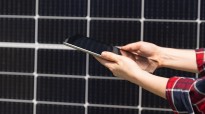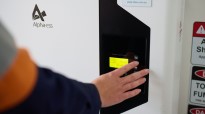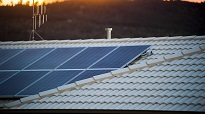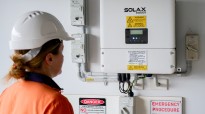Energy generators connected to the distribution network are called Embedded Generating Units. This embedded generation is located throughout our distribution network and is not directly connected to the transmission network.
Embedded generating units may comprise of different types of generation including, but not limited to:
- Solar Photovoltaic (PV)
- Biogas (from landfill sites)
- Wind turbines
- Micro hydro
The capacity can vary from a small 1 kW domestic solar system to a large solar farm over 20 MW in capacity.
The process for connecting an embedded generating unit to our network depends on the total system capacity.
The below information will provide advice on how you can get connected, however if you have any questions, please email us at embeddedgeneration@evoenergy.com.au.
You can also find out more information about solar and battery connections below.
Network connection options
| System category | Total system capacity | Type of generator |
| Small - Single Phase | ≤ 10 kVA excluding ESS ≤ 20 kVA including ESS 5kVA export limit |
Inverter Energy System (IES) |
| Small - Three Phase | ≤ 30 kVA (10kVA per phase) excluding ESS ≤ 60 kVA (20kVA per phase) including ESS 10kVA aggregate export limit or 5kVA per phase |
Inverter Energy System (IES) |
| Low Voltage (LV) | Not a small EG system & < 1.5 MVA* | Inverter Energy System (IES) Non Inverter Energy System (non-IES) |
| High Voltage (HV) | High Voltage connection & < 5MVA** | Inverter Energy System (IES) Non Inverter Energy System (non-IES) |
| Registered Generator | ≥ 5 MVA & registered within the NEM by AEMO | Inverter Energy System (IES) Non Inverter Energy System (non-IES) |
*The maximum LV system capacity of 1.5 MVA is the indicative limit for proponents before being required to implement a HV connection. Proponents applying to connect near or above this capacity should contact Evoenergy to determine if an LV connection is appropriate.
**HV embedded generation systems may have a capacity greater than or equal to 5 MW granted that it has been issued with a specific registration exemption by AEMO.
Small Embedded Generation
To connect a Small Embedded Generation system, refer to our Small Embedded Generation Technical Requirements. These applications are often made by your system retailer or installer through our Evoenergy DER portal, however you'll still need to give your consent.
Low Voltage Embedded Generation
The source of these generators vary, however are mostly solar and/or battery installations. These can be applied for through our Evoenergy DER portal and the system must comply with our Low Voltage Embedded Generation Technical Requirements.
High Voltage Embedded Generation
Common types of HV Embedded Generation include solar, landfill generation, diesel generation and micro hydro.
These can be applied for through our Evoenergy DER portal and the system must comply with our High Voltage Embedded Generation Technical Requirements.
Registered Generators
All embedded generator proponents whose generating systems do not benefit from the standing exemption from registration with AEMO (generally systems greater than 5 MW) should contact us at embeddedgeneration@evoenergy.com.au when seeking to connect to a distribution network.
Guidelines and reference documents
Evoenergy embedded generation connection requirements
Evoenergy small embedded generation technical requirements
Evoenergy low voltage embedded generation technical requirements
Evoenergy high voltage embedded generation technical requirements
Technical performance requirements for the connection of large scale embedded generators to Evoenergy’s network
Distributed Energy Resource Register Portal




